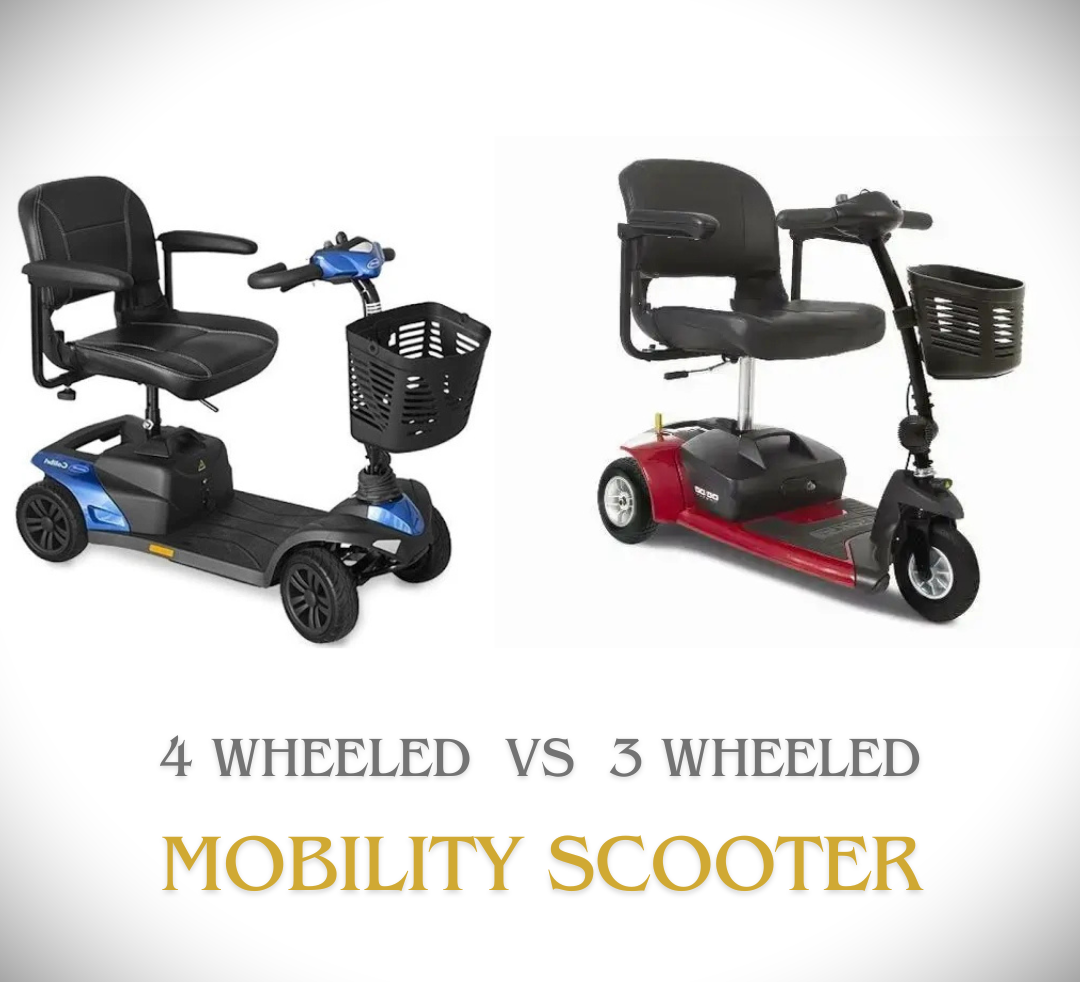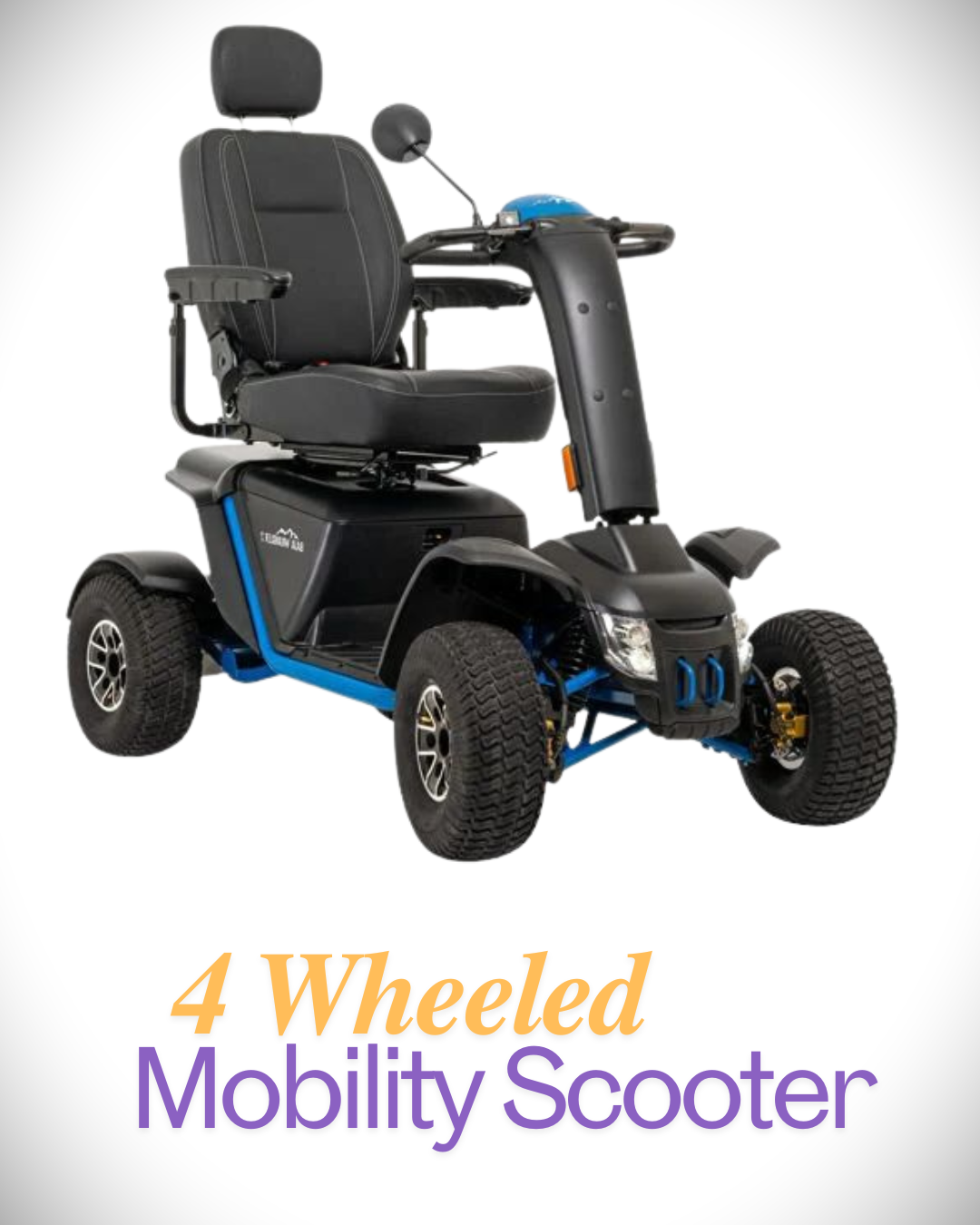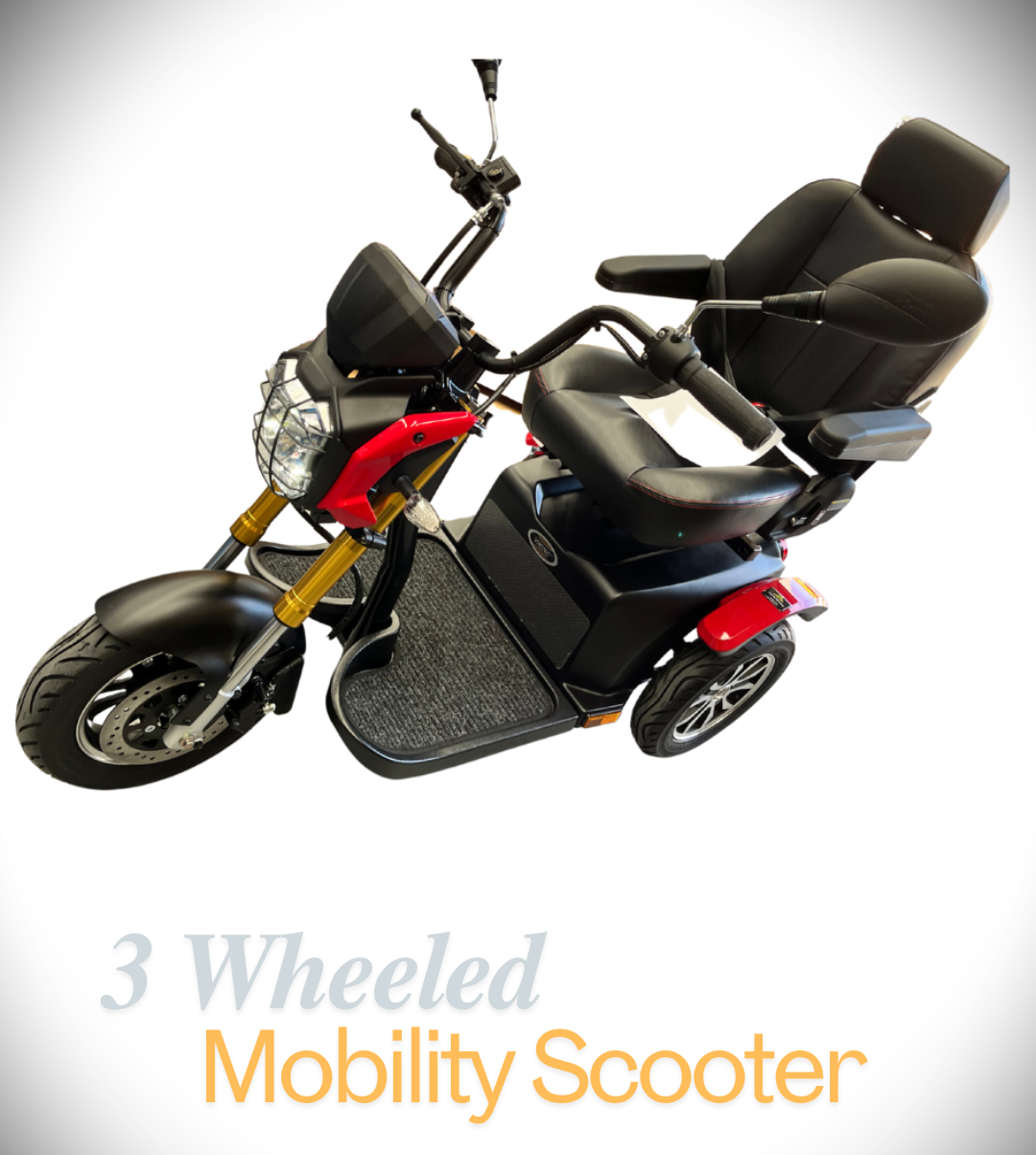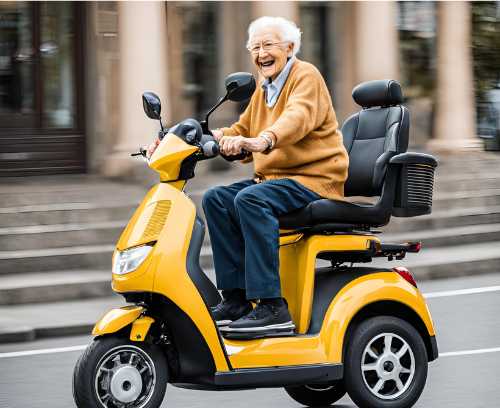- Home
- 4 Wheel Mobility Scooter
- 4 Wheeled Mobility SCooter
4
Wheeled Mobility Scooter vs. 3 Wheeled Mobility Scooter: Which One Is Right for
You?
When considering a mobility scooter, one of the first choices users face is whether to go with 4 wheeled mobility scooters or a 3-wheeled alternative. This decision goes beyond aesthetics—it directly affects comfort, maneuverability, safety, and lifestyle compatibility.
In this detailed comparison, we’ll explore both options head-to-head and help you determine which scooter matches your individual needs. Our focus will be the 4 wheeled mobility scooter, widely regarded for its stability and all-terrain versatility.

What Is a 4
Wheeled Mobility Scooter?
A 4 wheeled mobility scooter features two wheels at the front and two at the rear, distributing the user's weight more evenly and delivering a stable, balanced ride. These scooters are popular among users looking for rugged performance, particularly outdoors or on uneven terrain.
They are often slightly bulkier than 3-wheeled models, but with that comes increased durability and confidence during daily use—especially on sloped surfaces or curbs.

What Is a 3
Wheeled Mobility Scooter?
In contrast, a 3-wheeled scooter has a single front wheel and two rear wheels. This design allows for a tighter turning radius, making it a strong contender for indoor environments or narrow spaces.
However, with only one front wheel, it tends to sacrifice a bit of front-end stability.

Head-to-Head Comparison: 4 Wheeled Mobility Scooter vs. 3 Wheeled Mobility Scooters
Let’s break down the key attributes that truly matter when choosing between a 4 wheeled and a 3 wheeled mobility scooter.
Stability is one of the most important factors—4 wheeled mobility scooters provide excellent balance on uneven terrain and sloped surfaces, while 3 wheeled versions offer moderate stability, which can feel less secure on curbs or bumps.
When it comes to maneuverability, 3 wheeled scooters have the edge with a tighter turning circle that’s especially convenient in confined indoor spaces, whereas 4 wheeled scooters tend to have a wider turning radius.
In terms of weight distribution, 4 wheel models offer a more balanced setup that’s supportive for heavier users, while 3 wheeled designs may struggle to distribute weight evenly, making them less ideal for those with higher weight loads.
As for legroom, the open front design of 3 wheeled scooters provides more space, whereas the wider front axle of 4 wheeled models can slightly restrict legroom for taller users.
Terrain compatibility further highlights the strengths of a 4 wheeled mobility scooter, which performs admirably on rough or varied surfaces. Meanwhile, 3 wheeled scooters excel on flat, level terrain like shopping centres or indoor facilities.
Durability also sets 4 wheeled scooters apart—they’re generally built for regular, long-term use and come with robust frames. In contrast, 3 wheeled scooters often have lighter construction, making them suitable for short trips or occasional use.
Comfort plays a key role too, especially on uneven ground. With superior shock absorption and improved suspension systems, 4 wheeled models offer a smoother, more comfortable ride. 3 wheeled versions can feel bumpier, particularly on rugged surfaces, due to less front-end support.
Finally, considering aesthetic options, 4 wheeled scooters tend to resemble small vehicles, often designed with a focus on stability and substance. On the other hand, 3 wheeled models typically boast a sleek, minimalist design that appeals to users who prefer a streamlined, lightweight look.
Why Choose
a 4 Wheeled Mobility Scooter?
If you're prioritizing confidence, outdoor use, or overall security in movement, a 4 wheeled mobility scooter shines. Let’s explore the benefits in depth.
1. Superior Stability
With two wheels at the front and back, the scooter offers exceptional stability, reducing the risk of tipping over—especially while cornering, going uphill, or traveling over gravel, grass, or uneven tiles.
2. Safer for Outdoor Terrain
Outdoor lovers or those who frequently travel on sidewalks, rough pavement, or across garden paths will appreciate how well the 4 wheeled mobility scooter handles inclines and bumps. The added traction means better control in wet or unpredictable environments.
3. Better Weight Support
These models typically offer higher weight capacities—sometimes accommodating over 180 kg—making them an excellent choice for users who need that additional support or carry personal items frequently.
4. Durability for Daily Use
The design is geared toward long-term reliability. These scooters often come with enhanced suspension systems, solid tires, and weather-resistant frames, ensuring a longer lifespan with daily use.
Advantages
of a 3 Wheeled Scooter (and When It’s a Better Fit)
While the 4 wheeled mobility scooter boasts plenty of upsides, 3-wheeled models have their niche.
- Excellent turning radius makes them ideal for compact living spaces, small stores, or crowded interiors.
- Lighter and easier to transport, many users prefer 3-wheeled scooters for short errands or indoor malls.
- Greater legroom in the front can enhance comfort for taller individuals.
But here’s the tradeoff: they’re less effective when navigating outdoor terrain, curbs, or uneven surfaces. Their lighter frame and single front wheel design can result in wobbliness or tipping if not driven carefully.
Use-Case
Scenarios: Which Scooter Fits Your Lifestyle?
Still unsure which way to go? Let’s break it down by lifestyle needs.
You Might Want a 4 Wheeled Mobility Scooter If:
- You frequently travel outdoors across a variety of surfaces.
- Safety and balance are top priorities, especially when traversing hills or sidewalks.
- You carry groceries, equipment, or other items requiring storage compartments and durability.
- You plan to use the scooter daily for transportation, not just indoor mobility.
- You prefer a sturdy frame that withstands heavier weight and frequent usage.
A 3 Wheeled Scooter May Suit You Better If:
- Your primary use will be indoors or in malls, offices, or retirement communities.
- You need maximum maneuverability for turning in small spaces.
- You’re looking for a more compact or budget-friendly option.
- You value a lightweight frame for easier lifting or car travel.
A Look at
Modern Innovations in 4 Wheeled Mobility Scooters
Today’s 4 wheeled mobility scooters are far from basic—they’re loaded with features that make them more than just transportation aids:
- All-terrain tires and reinforced suspension for optimal ride comfort.
- Digital dashboards with battery indicators, USB charging ports, and LED headlights.
- Foldable frames or detachable parts for portability without sacrificing sturdiness.
- Swivel seats, reclining backrests, and adjustable armrests for ergonomic support.
- Remote key fobs and anti-theft systems on premium models.
These enhancements are making 4 wheeled models not just practical but aspirational for active users.
What to
Consider Before Buying
Whether you're leaning toward a 4 or 3 wheeled model, consider the following before making a decision:
- Your primary environments: Are you mostly indoors, outdoors, or both?
- Storage and transportation: Do you have the space to park a larger scooter? Will it need to fit into a car boot?
- Physical needs: Do you have balance issues, knee stiffness, or require more legroom?
- Budget: 4 wheeled mobility scooters often cost more upfront but offer more features and longer durability.
- Battery range: Will the scooter support your typical travel distance on a single charge?

Final
Thoughts: Why the 4 Wheeled Mobility Scooter Wins for All-Round Use
When it comes to all-around performance, the 4 wheeled mobility scooter is often the clear winner. It’s the choice for users who want peace of mind, optimal safety, and the ability to go virtually anywhere—from grassy parks to grocery aisles—with ease.
While 3 wheeled models serve a valuable purpose, especially indoors or in tight spaces, their limitations outdoors and under weight-bearing pressure make them less versatile for daily commuters or adventure seekers.
If you're investing in a long-term mobility solution, the 4 wheeled scooter’s durability, stability, and safety features provide tremendous value for years to come.
Back to top./Back to 4 Wheel Mobility Scooter



